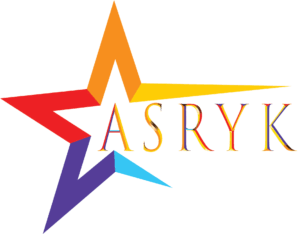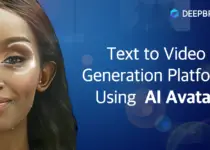The Rise of Character AI: Blurring the Lines Between Fiction and Reality
The world of artificial intelligence (AI) is rapidly evolving, pushing the boundaries of what was once considered science fiction. One particularly exciting area is the development of Character AI (CAI), a branch of AI that focuses on creating intelligent and interactive virtual characters. These characters can exist in various forms, from chatbots mimicking human conversation to virtual companions offering emotional support and personalized experiences.
This article delves into the captivating world of Character AI, exploring its potential, applications, and the ethical considerations that come with creating increasingly sophisticated virtual entities.
What is Character AI?
Unlike traditional AI systems designed for specific tasks like image recognition or data analysis, Character AI focuses on creating artificial personalities. These characters are programmed with the ability to learn, understand, and respond to human interaction in a natural and engaging way. They can access and process vast amounts of information, allowing them to hold stimulating conversations, generate creative content, and even develop emotional intelligence.
The Technology Behind CAI
Character AI utilizes a combination of several key technologies:
- Natural Language Processing (NLP): NLP enables CAI characters to understand the nuances of human language, including semantics, syntax, and context. This allows them to interpret what you say, respond in a meaningful way, and even adapt their communication style based on the situation.
- Machine Learning: Machine learning algorithms allow CAI characters to learn and improve over time. By analyzing past interactions, they can personalize their responses to individual users and become more adept at understanding human emotions and intentions.
- Large Language Models (LLMs): LLMs are powerful AI models trained on massive datasets of text and code. This allows CAI characters to access and process vast amounts of information, enabling them to generate human-quality text, translate languages, write different kinds of creative content, and answer your questions in an informative way.
- Affective Computing: This branch of AI focuses on recognizing, understanding, and responding to human emotions. CAI characters can be programmed to analyze facial expressions, voice tone, and word choice to gauge the user’s emotional state and tailor their responses accordingly.
Applications of Character AI
The potential applications of Character AI are vast and continuously expanding. Here are some key areas:
- Customer Service: CAI chatbots can streamline customer service interactions by providing 24/7 support, resolving simple queries, and scheduling appointments. This frees up human customer service representatives for more complex issues.
- Education and Training: CAI characters can act as virtual tutors, providing personalized learning experiences and adapting their teaching style to suit the individual student’s needs.
- Entertainment and Gaming: CAI characters can be integrated into games to create more immersive and interactive experiences. They can also be used to develop interactive stories, virtual companions, and even personalized news anchors.

- Healthcare and Therapy: CAI characters can offer emotional support and companionship to those struggling with loneliness or mental health issues. They can also be used to deliver cognitive behavioral therapy (CBT) exercises or help with medication adherence.
- Language Learning: CAI characters can act as virtual language coaches, providing personalized feedback on pronunciation and grammar, and engaging in conversation practice.
The Future of Character AI
As technology evolves, CAI characters are poised to become increasingly sophisticated, blurring the lines between reality and fiction. Here are some potential future directions:
- Embodied AI: Imagine CAI characters inhabiting robots or virtual reality avatars, enabling them to interact with the physical world. This could lead to personalized assistants that can help with tasks around the house or even robots offering companionship and care for the elderly.
- Emotional Depth: CAI characters could develop more complex emotional intelligence, capable of not just recognizing human emotions, but also expressing their own. This could lead to virtual companions that offer not just support, but genuine empathy and connection.
- Creative Collaboration: CAI characters could become powerful creative partners, assisting with writing, composing music, or even designing products. Imagine brainstorming sessions with an AI that can understand your ideas and contribute its own unique perspectives.
Ethical Considerations of Character AI
The rise of Character AI raises several crucial ethical questions:
- Transparency and Bias: How transparent will it be whether you are interacting with a human or a CAI character? Biases inherent in the data used to train these systems could lead to discriminatory or offensive behavior. Measures need to be developed to ensure transparency and mitigate bias.
- Privacy and Security: As CAI characters become more adept at gathering and analyzing personal data, ensuring user privacy becomes paramount. Robust security measures are essential to protect sensitive information.
- Emotional Dependence: Could users become overly reliant on CAI characters for emotional support, potentially hindering real-world relationships? Guidelines and responsible development are crucial to ensure that CAI characters complement, not replace, human connections.
Conclusion
Character AI presents a future filled with both exciting possibilities a
evolve, it’s crucial to navigate these challenges responsibly. Here are some ways we can ensure the positive development of Character AI:
- Open Dialogue: Fostering open discussions about the ethical implications of CAI is vital. Regulatory frameworks and industry standards need to be established to address issues like transparency, bias, and privacy.
- Human-in-the-Loop Design: Developing CAI with a “human-in-the-loop” approach ensures human oversight and control. This could involve human moderators overseeing interactions and ensuring characters behave ethically.
- Focus on User Well-being: The core focus of CAI development should be on enhancing human well-being. This means prioritizing applications that address genuine needs, such as education, healthcare, and companionship, while mitigating potential risks like social isolation.
The Inner Workings of a Character AI
While the core functionalities of NLP, machine learning, LLMs, and affective computing form the backbone of Character AI, understanding how these elements interact to create a cohesive personality is crucial.
- Character Design: At the heart of a Character AI lies its personality. This encompasses its knowledge base, communication style, emotional range, and even quirks or biases. Developers can craft specific personalities or utilize algorithms to generate them based on user preferences.
- Learning and Adaptation: One of the key strengths of Character AI is its ability to learn and adapt. Through interactions with users, CAI characters can refine their understanding of language, human behavior, and even their own internal world. This allows them to become more personalized, engaging, and potentially even develop a sense of self-awareness.
- The Illusion of Agency: One of the fascinating aspects of CAI is its ability to create the illusion of agency. Characters can express opinions, make decisions, and even exhibit emotions, blurring the line between pre-programmed responses and genuine sentience. However, it’s important to remember that these actions are based on complex algorithms, not true consciousness.
The Road Ahead
The journey of Character AI has only just begun. As AI technology continues to advance, we can expect even more groundbreaking applications to emerge. By fostering open dialogue, prioritizing responsible development, and focusing on human well-being, we can ensure that Character AI becomes a powerful tool for good, enriching our lives and shaping a more positive future.



